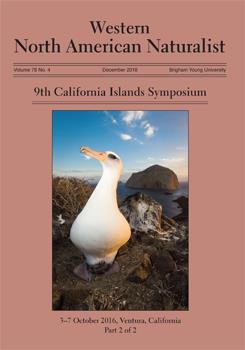The Argentine ant (Linepithema humile) is a widespread and abundant introduced species that disrupts ecosystems throughout its introduced range. This invader was inadvertently introduced to Santa Catalina, San Clemente, Santa Cruz, and San Nicolas Islands at various points during the past century but currently appears to be absent from the remaining Channel Islands. Multiple spatially disjunct infestations on each invaded island individually range in size from <500 m2 to >427 ha and encompass a variety of habitats, including large areas that are entirely dominated by native perennial vegetation. The existence of multiple infestations on individual islands suggests that inadvertent introduction by humans serves as an important within-island dispersal mechanism. Multiyear surveys of individual infestations on San Clemente Island and Santa Cruz Island reveal approximately radial patterns of expansion (as a result of colony budding) away from the edge of each infestation. Rates of spread by budding on San Clemente Island range from 10 m/year to 57 m/year and are comparable to those on mainland California. Given the documented effects of Argentine ant invasions on Santa Cruz Island, the continued spread of the Argentine ant on the Channel Islands represents a serious environmental concern. Eradication programs underway on San Clemente and Santa Cruz Islands will hopefully result in island-wide elimination of this detrimental invader.
BioOne.org will be down briefly for maintenance on 17 December 2024 between 18:00-22:00 Pacific Time US. We apologize for any inconvenience.
How to translate text using browser tools
25 October 2018
The Introduced Argentine Ant (Linepithema humile) on the California Channel Islands: Distribution and Patterns of Spread
Christina L. Boser,
Korie Merrill,
Robert N. Fisher,
Ida Naughton,
David A. Holway
ACCESS THE FULL ARTICLE





